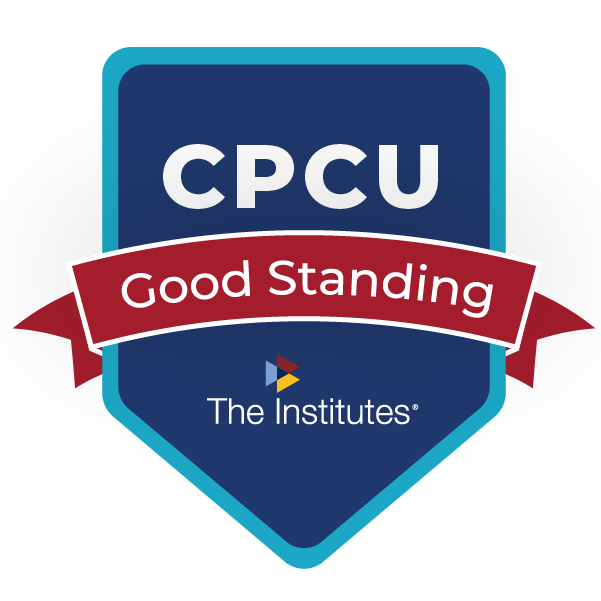Social Inflation and Its Impact on BI Settlements
January 27, 2021 – What is social inflation? If you’re a stat junkie who happens to work in or around the personal injury litigation arena, have I got a white paper for you!
Last June, the Insurance Research Council published Social Inflation: Evidence and Impact on Property-Casualty Insurance. This fascinating 18-pager is very readable. Further, it lays bare the impact evolving societal trends have on the rising cost of settlement and verdict values. By extension, social inflation impacts insurance industry profitability.
Every policyholder, claims handler, actuary, lawyer, and citizen who reads this paper will get a helpful glimpse of the future.
Anger Driving Claims Costs?
Personal injury lawsuit filings seem to correlate directly to societal anger.
One of the more interesting tidbits is the observed link between Americans’ general anger and their tendency to file personal injury lawsuits.
Recent Gallop polling suggests nearly one in four people are angry on any given day – the highest level in more than a decade.
No analysis was performed indicating the source of individuals’ anger.
A Role for Structured Settlements
Because of their unique ability to match future dollars with future needs, structured settlements can be especially helpful in addressing another social inflation trend. The so-called “nuclear” verdicts, or those exceeding $10 million, have emerged as a major threat to long-term insurance company viability.
With personal injury filings expected to continue increasing and nuclear verdicts a statistical reality, structured settlement usage is expected to continue serving a vital role in dispute resolution.
Perhaps the biggest stunner of the paper is this statistic: Average jury verdicts against trucking firms have increased a whopping 654% since 2012 and now top $17 million!
With actuarial-adjusted pricing available for those with severe injuries, structured settlements permit the negotiating parties to resolve their claims more cost-effectively before trial.
Somber Final Thought
It’s worth mentioning all the data collected for this paper predated the emergence of COVID-19. It will be interesting to see the pandemic’s impact on social inflation going forward.
Photo by Icons8 Team on Unsplash
Posted: January 27, 2021 | Category: Blog, Structured Settlements | Tags: litigation, structured settlements | Comments Off on Social Inflation and Its Impact on BI Settlements
The Buffett Indicator
November 10, 2020 – Please, please, please, PLEASE understand the stock market is not without risk.
The stock market has had a phenomenal run over the course of the past decade. Fortunes have been made, lost for a bit, then made again.
If you’re among those who have benefited from this prolonged bull run, CONGRATULATIONS! You beat the house in Vegas.
Alas, human nature is such that prolonged stock market success often lulls investors into a false sense of security. They remain solidly invested even when certain indicators suggest it may be wise to pull back.
And just like the gambler who can’t walk away from the table when they’re ahead, bad times may lie ahead.
Now is one of those times. It’s actually been here for the better part of a year.
The Buffett Indicator
Warren Buffett has few peers when it comes to investing success. Using a combination of skill, common sense, patience, and a shrewdness which belies his folksy nature, Buffett has amassed a personal fortune and personifies wealth building acumen.
Because his words carry so much weight, the Buffett Indicator, which has historically pinpointed when stocks may be overvalued and could come crashing down, is something everyone with market exposure should pay close attention to and can be simplified as follows:
Market Capitalization/Quarterly GDP
The higher the Buffett Indicator number, the greater the risk.
Comparing Historical Buffett Indicators
According to this graph from DQYDJ.com, the Buffett Indicator hit 2.227 during Q2 2020. That’s really high! Throw in a global pandemic and stimulus spending over the past ten months and the market would seem even more precarious.
For the same reason athletic teams review film of games already played, sometimes backward glances can help shed light on how to prepare for the future. For perspective and to see what may lie ahead, let’s pick a few select periods starting when the nonagenarian Buffett was a spry 30-something year old investor:
Quarter Year – Buffett Indicator – DJIA – Years until DJIA returned
Q4 1968 – 1.022 – 6,529 – 25 years
Q1 2000 – 1.886 – 15,526 – 6.9 years
Q2 2007 – 1.524 – 16,747 – 6 years
Q1 2020 – 2.160 – 29,276 – ???
 IF the market does tank, are you comfortable waiting six, seven, or even twenty-five years until the markets return to their pre-crash levels? That’s a lot of cash you’ll be burning.
IF the market does tank, are you comfortable waiting six, seven, or even twenty-five years until the markets return to their pre-crash levels? That’s a lot of cash you’ll be burning.
Remember the Roaring Twenties? Of course, you don’t. Unless you’re 105 or older! That decade was one of exponential economic growth and widespread prosperity. It was an amazing time for many. Until it wasn’t. Once the bubble popped, the Great Depression arrived sending stock values plummeting along with the economy which took more than twenty-five years to recover from!
Your Safest Bet
So, if you are in or near retirement and are still fully invested in the market, do yourself a huge favor and GET OUT NOW! At least partially. You don’t need to completely eliminate your market exposure, but converting some of your portfolio into a stream of safe, secure, tax-advantaged cash flows will go a long way toward preserving what you’ve earned and protecting yourself from potentially catastrophic loss.
If you are about to receive money from a personal injury settlement, here’s another little bit of Warren Buffett wisdom worth sharing. Structured settlements remain the safest, surest choice for anyone ready to settle their insurance claim. Some options even include stock market-driven upside potential without the downside risk.
Posted: November 10, 2020 | Category: Blog, Retirement, Structured Settlements | Tags: retirement income, structured settlements | Comments Off on The Buffett Indicator
Structured Settlements: Taxable Damages
Sixth in a series of blog posts dedicated to helping clients decide when a structured settlement should be considered.

Today’s Installment: Taxable Damages
May 21, 2019 – If you’re a regular follower of our educational content, you already know there are few subjects we’re more passionate about than structured settlements for claims and lawsuits involving taxable damages.
We’ve studied it, researched it, created analytical tools to help clients make more informed decisions about it, presented MCLE classes to attorneys about it, written articles for national and regional periodicals about it, and complained to Congress about it.
In short, if you need help on this topic, you’ve come to the right place.
Posted: May 21, 2019 | Category: Articles, Blog, Structured Settlements | Tags: litigation, nonphysical injury lawsuits, structured settlements, taxable lawsuits, taxable settlements, wrongful termination | Comments Off on Structured Settlements: Taxable Damages
Structured Settlements: Policy Limits
Fifth in a series of blog posts dedicated to helping clients decide when a structured settlement should be considered.

Today’s Installment: Policy Limits
May 17, 2019 – People and businesses buy liability insurance to protect against personal or corporate financial loss when lawsuits are brought against them.
Resolving lawsuits can be problematic enough under the best of circumstances. But when accidents are severe enough and/or the liability limits too low to adequately compensate the plaintiff for their loss, the challenge is magnified.
Structured settlements can play a vital role in those situations where the accepted value of the case exceeds the policy limits.
Posted: May 17, 2019 | Category: Articles, Blog, Structured Settlements | Tags: lawsuit, personal injury, policy limits, structured settlements | Comments Off on Structured Settlements: Policy Limits
Structured Settlements: Post-Verdict Negotiations
Fourth in a series of blog posts dedicated to helping clients decide when a structured settlement should be considered.

Today’s Installment: Post-Verdict Negotiations
May 15, 2019 – When personal injury lawsuits are adjudicated, it’s a safe bet that one side or the other will be displeased with the end result. Usually it’s just a matter of degrees of disappointment.
Once the jury renders its decision – whether a defense verdict, one of the “runaway” variety in favor of the plaintiff, or somewhere in between – litigation participants have few choices about what happens next regardless of which side of the v. they stand.
They can accept the verdict, appeal it, or seek to compromise the decision.
In all but a few rare instances, a structured settlement can be a powerful, if underused, tool at this phase. Yet surprisingly, many claims professionals and attorneys (plaintiff and defense) alike incorrectly assume that a structured settlement is not possible once a verdict is rendered.
While it is true that a final judgment with no appealable issues triggers constructive receipt and therefore cannot be structured, in most cases structured settlements are not only possible but quite useful following a trial.
Posted: May 15, 2019 | Category: Articles, Blog, Structured Settlements | Tags: litigation, post-verdict stuctured settlements, structured settlements | Comments Off on Structured Settlements: Post-Verdict Negotiations
Structured Settlements: Catastrophic Injuries
Third in a series of blog posts dedicated to helping clients decide when a structured settlement should be considered

Today’s Installment: Catastrophic Injuries
May 10, 2019 – While structured settlements are useful in resolving a wide variety of liability disputes, those involving catastrophic injuries are especially well-suited to this method of claims resolution.
When an accident leaves a person tragically impaired requiring health care and living assistance extending well into the future, there are several reasons a structured settlement should always be the first choice when negotiating and finalizing these lawsuits or claims.
Posted: May 10, 2019 | Category: Articles, Blog, Structured Settlements | Tags: catastrophic injury, guaranteed income, structured settlement, structured settlements | Comments Off on Structured Settlements: Catastrophic Injuries
Structured Settlements: Fatalities
Second in a series of blog posts dedicated to helping clients decide when a structured settlement should be considered

Today’s Installment: Fatalities
May 7, 2019 – “Death is a crisis that all families encounter, and it is recognized as the most stressful life event families face . . .”
The preceding quote was excerpted from Chapter 4, “Death, Dying, and Grief in Families” (Murray, Toth & Clinkenbeard, 2005), of Families & Change: Coping with Stressful Events and Transitions, a best-selling text of compilation scholarly research on a topic most of us would sooner avoid.
No death can be minimized, but the unexpected, sudden death of a loved one leaves families feeling especially violated as they struggle for comfort that is too slow in arriving and acceptance of a new reality they never asked for.
The ensuing grief takes a significant emotional toll on psyches and many families fracture to the point of permanent dysfunction as a result.
When survivors file insurance claims and wrongful death lawsuits due to negligence alleged to have caused a fatality, they experience a new set of stressors inherent in the litigation process which can prolong their suffering and worsen their already-fragile sense of being.
And that’s just the emotional toll.
Posted: May 7, 2019 | Category: Articles, Blog, Structured Settlements | Tags: auto accidents, litigation, structured settlement, structured settlements, wrongful death | Comments Off on Structured Settlements: Fatalities

















